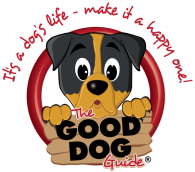Pet owners are spending a significant amount of money on premium dog food as they want nothing but the best for their fur babies. According to a BBC report, it is estimated that UK dog owners spent around £3.8 billion on food and treats in 2023 as more people are buying high quality dog food that range from grain-free kibble to freshly made and flash frozen meals. The report also mentions that owners are ordering these products mostly from subscription-based start-ups as they want to give their dogs the most nutritious food they can afford.

Many high-end food manufacturers and pet food subscription businesses offer products with specialised ingredients that are touted to be better for your dog’s health. But if cost is a concern, don’t fret. There are lots of dog food options in groceries and supermarkets that are just as nutritious, but won’t hurt your budget. Knowing the best ingredients can help you to make better choices when you’re on the hunt for your pet’s meals, so here’s how to decode food labels when shopping for dog food.
Be on the Lookout for Essential Ingredients
When deciphering dog food labels, be on the lookout for the three most essential ingredients in dog food. These are proteins, carbohydrates, and fats, and if these three are first in the list, that means that they make up the bulk of the product and you’re getting the most out of your money’s worth. Proteins can be beef, chicken, turkey, lamb, or salmon, carbohydrates can be rice, corn, potatoes, wheat bran, or peas, while fats can be fish oil, corn or canola oil, or beef or chicken fat. See to it that all the ingredients are listed individually. If a can of dog food has something vague like ‘animal protein’ listed on it, you’re probably better off looking for food from another brand.
Vitamins and minerals are also essential for a dog’s health, so be sure that the food contains Vitamins A, B complex, D, E, and K, as well as calcium, phosphorus, magnesium, zinc, and iodine, among others. If your fur baby has a health condition, such as joint pain or lack of mobility, BioPup recommends choosing dog food or treats that contain ingredients that can help to heal or improve your dog’s condition. Some good examples of such ingredients are dried Antarctic krill and Omega-3 fatty acids, which can fight inflammation and relieve pain.
Inspect the Wording on the Package
The wording on some food packages for humans can be so confusing that sometimes it’s hard to tell whether you’re really getting what you paid for. When shopping for juice, for instance, most people have no idea if they’re getting 100 percent fruit juice or if they’re just getting a fruit-flavoured drink. Unfortunately, it’s the same when you’re shopping for dog food, so you’ll need to be familiar with the wording as some can be misleading. Just because something is labelled as ‘beef flavour’ doesn’t mean it contains real beef, so check the ingredients to be sure.
Also, if you see a product that says something like ‘Chicken Dinner for Dogs’ or ‘Lamb Entree,’ it means that those foods contain 25 percent of the stated ingredient. Any dog food that has less than 95 percent of its product name should come with a term like dinner, entree, bowl, plate, or platter. Products with 95 percent of the main ingredient will be labelled as ‘Beef for Dogs’ or ‘Turkey Dog Food.’
Check the ‘Best By’ Dates on Dog Food Packages
Just as humans should never eat food after the ‘use by’ or ‘best by’ date, dogs should also never be fed food that is past their expiration date. Expired dog food can harm your pet since it has reduced nutritional value, and it may also contain mould or bacteria that can make your fur baby ill. For these reasons, it’s recommended not to buy dog food, especially wet dog food, in bulk. Instead, buy a few cans or packs at a time so you can always get a fresh batch.
Shopping for dog food can be a daunting experience, but don’t let the sheer number of options overwhelm you when you’re choosing your pet’s meals. Check the ingredients, wording, and ‘best by’ dates whenever you’re buying food, and always choose ones with the highest nutritional value to keep your dog healthy and happy.
Article Supplied
